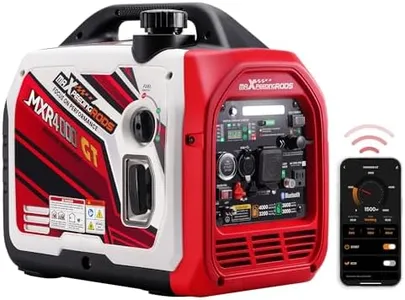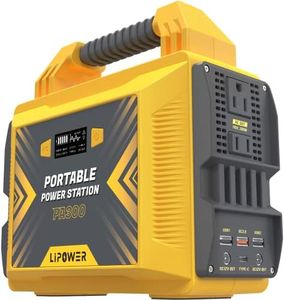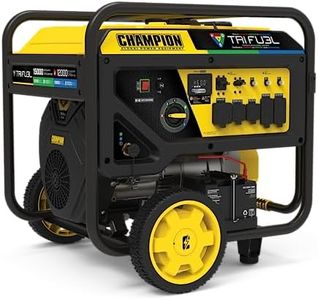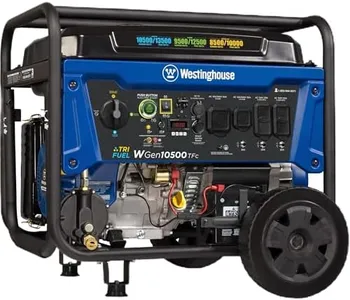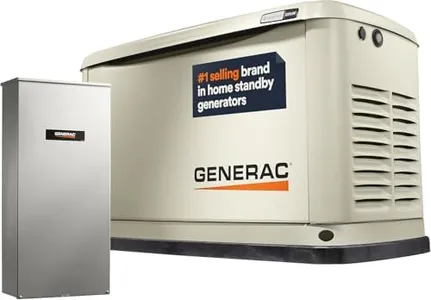10 Best Natural Gas Generators 2025 in the United States
Our technology thoroughly searches through the online shopping world, reviewing hundreds of sites. We then process and analyze this information, updating in real-time to bring you the latest top-rated products. This way, you always get the best and most current options available.

Our Top Picks
Winner
Westinghouse 14500 Peak Watt Tri-Fuel Home Backup Portable Generator, Remote Electric Start, Transfer Switch Ready, Gas, Propane, and Natural Gas Powered
Most important from
1370 reviews
The Westinghouse Outdoor Power Equipment 14500 Peak Watt Tri-Fuel Generator is a versatile and powerful choice for household backup or portable power needs. It offers impressive power output, with 14,500 peak watts and 11,500 running watts on gasoline, 13,500 peak watts and 10,500 running watts on propane, and 12,000 peak watts and 9,500 running watts on natural gas. This makes it suitable for larger homes requiring substantial power during outages. Its tri-fuel capability (gasoline, propane, and natural gas) adds flexibility in fuel options, which is a definite strength.
The generator runs up to 19 hours on a full gasoline tank, providing extended power without frequent refueling. However, run time on a 20 lb propane tank drops significantly to about 7 hours. The heavy-duty 550cc 4-stroke OHV engine ensures durability and reliability, backed by a 3-year limited warranty and nationwide customer service. The remote electric start is convenient, especially during emergencies, and the generator is transfer switch ready, making installation easier for home use. Portability is somewhat compromised by its weight (230 pounds), but it's manageable for a heavy-duty generator.
Maintenance is straightforward with features like an hour meter and automatic voltage regulation. The generator also includes useful safety features like overload protection and a CO sensor for added safety. Despite being on the heavier side and having a shorter run time on propane, its high power output, fuel versatility, and robust construction make it an excellent choice for those needing reliable backup power for larger homes.
Most important from
1370 reviews
DuroMax XP13000HXT 13,000-Watt 500cc Tri Fuel Gas Propane Natural Gas Portable Generator with CO Alert, Black/Blue
Most important from
363 reviews
The DuroMax XP13000HXT is a powerful and versatile natural gas generator that stands out with its 13,000 watts of power, making it suitable for both residential and commercial use during power outages. One of its key strengths is the tri-fuel capability, allowing you to use gasoline, propane, or natural gas, providing flexibility and convenience depending on availability and cost of fuel. The powerful 500cc OHV engine supports this high wattage, ensuring reliable performance. It includes a CO Alert feature that adds a layer of safety by protecting against harmful fumes, which is crucial for indoor use or in enclosed spaces.
The generator is relatively easy to start with both push-button and remote start options which add to its user-friendly nature. With a noise level of 74 dB, it is not the quietest option on the market, but it is manageable for its power output class. The run time of 8 hours is decent, though might require frequent refueling during longer outages. At 240 pounds, portability could be a concern despite being labeled as portable, but the included wheel and handle kit help move it around. Maintenance requirements are typical for a generator of this power class, with regular checks needed to ensure long-term reliability. The digital display aids in monitoring the generator's status, making maintenance easier.
The DuroMax XP13000HXT is a robust and versatile option for those needing a reliable power source, though its weight and noise level might be a consideration for some users.
Most important from
363 reviews
Westinghouse 12500 Watt Dual Fuel Home Backup Portable Generator, Remote Electric Start, Transfer Switch Ready, Gas and Propane Powered
Most important from
24404 reviews
The Westinghouse 12500 Watt Dual Fuel Home Backup Portable Generator is a powerful and versatile option for home backup needs. With a running wattage of 9500 watts on gasoline and 8500 watts on propane, it provides significant power for various household applications. The peak wattage reaches up to 12500 watts on gasoline and 11200 watts on propane, making it suitable for handling surges in power demand. Its dual fuel capability offers flexibility, allowing users to choose between gasoline and propane based on availability and preference.
The remote electric start with an included key fob adds convenience, while the electric and recoil start options ensure reliable operation in different situations. The generator features a substantial 6.6-gallon fuel tank with a fuel gauge, supporting up to 12 hours of run time, which is beneficial during extended power outages. Additionally, the generator includes multiple outlets with rubber covers for safety, including household receptacles and transfer switch ready outlets.
The Westinghouse generator is quite heavy, weighing 210 pounds, which may impact its portability despite the presence of wheels. However, its sturdy build and included components such as a battery charger, oil, and a tool kit, make it a plug-and-play solution with minimal assembly required. Maintenance is simplified with features like automatic low oil shutdown and a digital hour meter. The generator is EPA compliant and backed by a 3-year limited warranty, ensuring peace of mind for users. This generator is well-suited for residential use, particularly for those who need a reliable, high-output power source during emergencies.
Most important from
24404 reviews
Buying Guide for the Best Natural Gas Generators
Choosing the right natural gas generator involves understanding your power needs and the specific features that will best meet those needs. Natural gas generators are a reliable source of backup power for homes and businesses, providing electricity during outages or in remote locations. To make an informed decision, you need to consider several key specifications that will determine the generator's performance, efficiency, and suitability for your particular situation.FAQ
Most Popular Categories Right Now
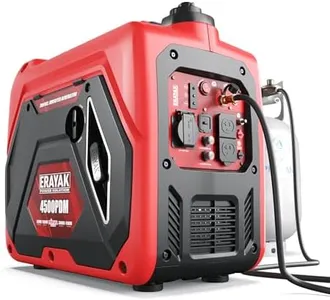

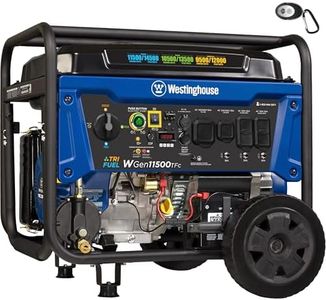
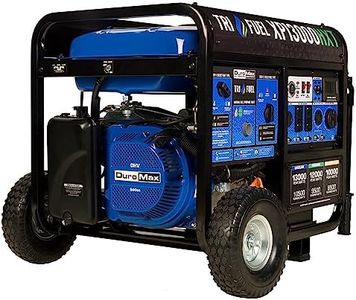
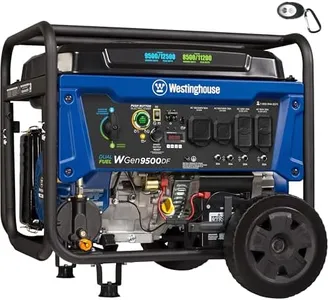
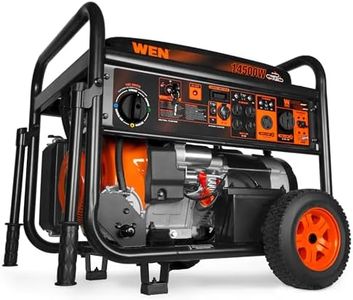
![[Upgraded Version] ALLPOWERS S2000 Portable Power Station 2000W (Peak 4000W) MPPT Solar Generator 1500Wh Backup Battery with 4 AC Outlets for Outdoor Camping RV Emergency Off-Grid](https://images-proxy.bestreviews.guide/OouIKpk4unEf0t5j_R8qV3SP1_g=/0x300/https://m.media-amazon.com/images/I/51n9OTptdIL._AC_CX679_.jpg)
